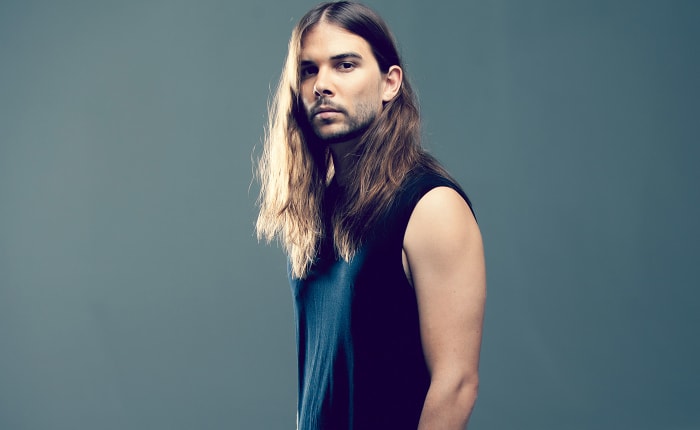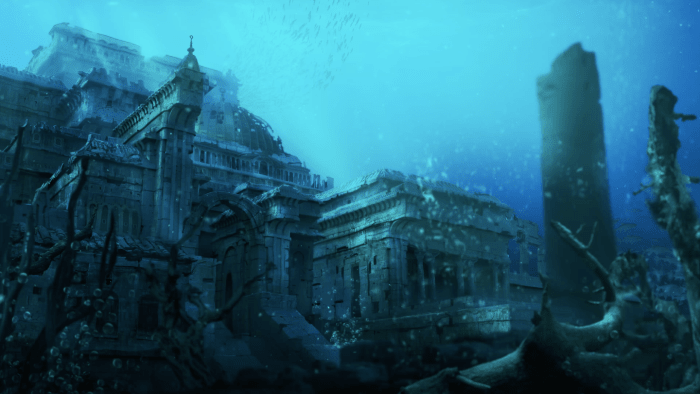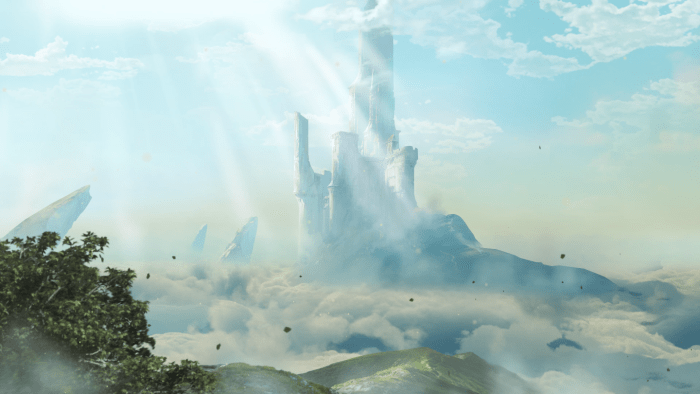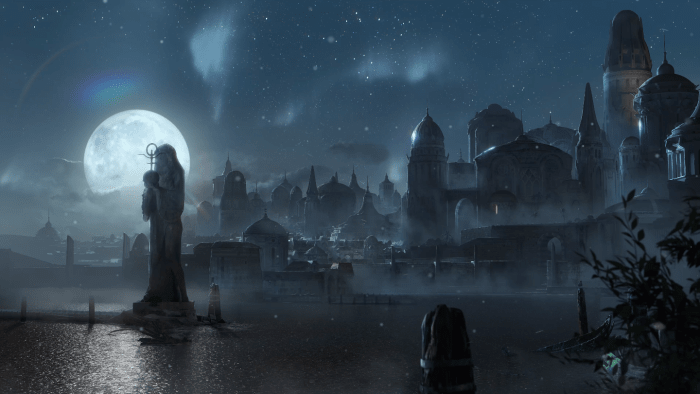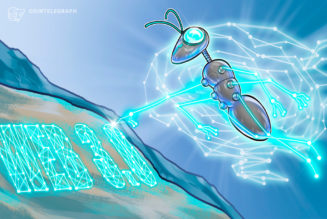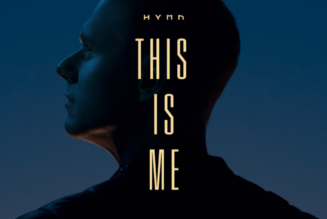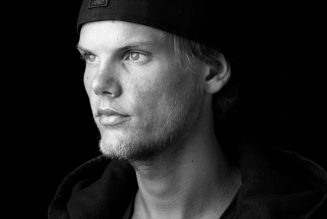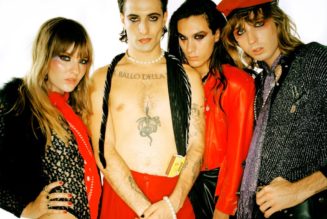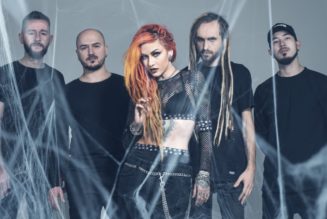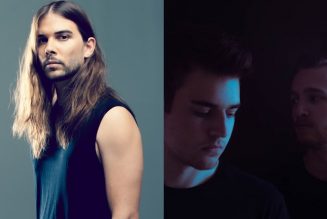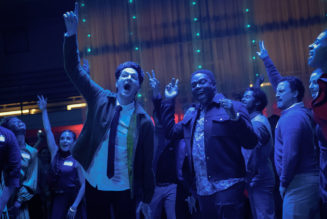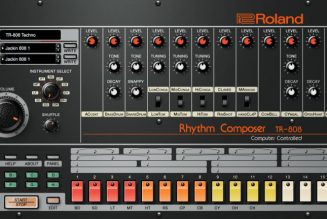The collision course of EDM and NFTs (non-fungible tokens) has been one of hyperactive harmony.
An immeasurable number of electronic music artists have dropped a dizzying sequence of intricate digital artworks in recent months, selling them to collectors looking to cash in on the NFT craze.
The latest major artist to push their chips into the blockchain-powered virtual art pot is Seven Lions. The melodic bass titan and founder of Ophelia Records—one of the dance music scene’s most venerated tastemakers—is primed to drop his debut NFT collection on Crypto.com/NFT.

Crypto.com/NFT is a marketplace that allows NFT enthusiasts to discover exclusive digital collectibles and their non-fungible tokens.
Crypto.com/NFT
Developed by illustrator and graphic artist Evelyn Abermotion, the nom de plume of a Munich-based veteran designer and art director, the metaphysical “Worlds” collection contains five items.
Each one transports its viewers to eerie pictorials that originally graced the covers of various Seven Lions projects from yesteryear. However, longtime Ophelia animator and renowned 3D artist Robbie Kohler has now breathed life into the images, pairing each with new audio produced specifically for the unique NFT drop.
Ahead of the debut of “Worlds,” EDM.com and Crypto.com/NFT have joined forces on a collaborative interview with Seven Lions to chat about his stunning debut NFT collection and its ties to Greek mythology.
“Worlds” will drop on Sunday, May 16th at 9AM ET (6AM PT) via the Crypto.com/NFT marketplace. In our interview below, we’ve unveiled three stills from the collection’s five items: one inspired by Seven Lions’ Find Another Way EP, another by his single “Ocean” with Jason Ross and Jonathan Mendelsohn, and one pegged to “Only Now” featuring Tyler Graves.
What makes the five selected worlds significant in the mythology of Seven Lions and the story of Ophelia?
That’s an interesting question. I feel like we try to touch on different locations. I’m not sure if you’re familiar with Dark Souls, but the storytelling that we try to do is [also] non-linear and very esoteric, I guess. We’re just choosing spaces that tell part of the story, but not in a linear A to B kind of way. We do that through landscapes, and characters, and items and things like that. These are just some landscapes that we chose that we thought would be good for the first drop.
Can you speak a little more to any of the other inspirations behind the Mythos of Seven Lions?
Gene Wolfe is one of my favorite authors, so I’d say a lot of the mythology is inspired by his writing and a lot of Greek mythology. Those are the two main inspirations of the Mythos. As far as why we do the Mythos, it’s like, I like stuff that’s otherworldly. I like my media and entertainment to be something that takes me out of my everyday life. I think it’s really important for me to create a world or an environment where people feel like they can escape to.
I think really good music, for me at least, pulls you out of your everyday life. That’s definitely what the Mythos has to do with, and something interesting that requires some thought and some putting together—following the clues… That’s where a lot of that comes from.
What came first: the music or the art?
These are covers for different EPs that I’ve done in the past. Generally, the music will set the tone of the artwork. I’ll finish a song and I’ll talk to my art director and be like, “This song feels very blue-green to me,” or, “This feels red and fire, or red in more of a candlelight glow kind of way.” I go with things like that. Just a few short image descriptors, and then my art director will tie that into a location in the mythology—and then we’ll reach out to an artist and have them create what we were thinking, and then that goes through a whole different process of a bunch of revisions and stuff.
Basically, it starts with the sound and then the sound will dictate texture, color and location, essentially.
But we understand that the music accompanying these pieces is unreleased work?
Yes! In this case, I didn’t want to just re-release the EPs, so I decided to make some short 30 seconds soundscapes to go with these art pieces. Normally, it’s the other way around—and technically these art pieces were inspired by the music, but different music than what is attached to them currently.
So the art was inspired by your music, which then re-inspired the art, which re-inspired more music in return?
Yes, exactly!
Can you speak on the process of working with Evelyn Abermotion and Robert Kohler to bring these worlds to life?
I’ve always had a good relationship with them and it’s just been a long-term natural flow. Robert, in particular, has helped me out of a lot of situations, animating stuff for live shows. Sometimes I’ll get a whole big, big visual package, and a lot of cinematography stuff, and it won’t come back very polished and I’m like, “Oh, dude, we need to add a spaceship in this right now to make it look cool and otherworldly. Otherwise, it just looks like people are walking around the forest in California.”
He’s done a lot of late nights and hard work for me, just doing a lot different animation stuff. Definitely love working with that guy.
Do you see any parallels between electronic music production and graphic art?
I don’t know the graphic art world too well, other than us hiring people for projects. I think of graphic art as more of a freelance thing, but it seems like NFTs are making… graphic art [become] its own sought-after form of art in its own right, which is really interesting to see.
It’s cool. It’s definitely going to make it a lot more expensive to find graphic artists to just do some animation stuff for us, but it’s cool to see it becoming its own way for artists to make money—essentially through NFTs and things like that—just by doing whatever art they want to make themselves. They don’t have to get hired by somebody like me to make a spaceship or a landscape. They can just do their own thing now, which is pretty cool.
Would you say that NFTs are helping to legitimize digital artists in communities that haven’t always given them the same weight as more traditional fine artists?
It seems like that’s exactly what’s going on. You have NFTs being sold in like fine art auction houses. That just wouldn’t have happened before, so absolutely. That’s part of what makes NFTs exciting. It’s an interesting thing. I think a lot of people still don’t really understand it yet, and they don’t understand what it’s like to be an artist and have everybody else dictate your art’s value.
The fact that people can sell their own art, put their own price on it and watch it get bid on, and things like that, is pretty special. I think it’s got to be exciting for a lot of these graphics artists, honestly. I don’t really know how it’s going to go with music, how we’re going to be able to use it in the same way, but I think there’s a lot of opportunities for all different kinds of artists of different mediums to find a way to use an NFT to make something cool.
Can you speak to any of your plans for future drops, and directions you want to take in the NFT space?
I want to do more of a standardized thing with my record label, where we would just release everything that comes through Ophelia — all the artwork gets NFTs at varying price points, including less expensive ones — and do limited time open drops. People could just collect the artwork for the songs that they enjoy. I just feel like it would make an interesting market of essentially trading cards or whatever, because I think of it in a long-term way — like if I had had NFTs back when I did something like “Worlds Apart,” those would be really sought after and only a few people would have them.
Now people would be really into those NFTs and they’d be trying to find them, but only a few people who have been Seven Lions fans would have those. I think that would create a really special collectors element to music and cover art, and things like that. I think it would be just a cool way to engage the fans and if people want to collect stuff like that, they totally can — and if they don’t, they definitely don’t have to. That’s one of the ways I see going forward, just with Ophelia getting into this space: people collecting NFTs for the releases that they like.
Other than that, my art director is a really creative guy. He’s been coming up with a few different ideas that we’re pursuing right now that are definitely very interesting—and we’re trying to tell the story of the Mythos a little more through these things. I was explaining, we tell our Mythos kind of like Dark Souls does. If you know anything about Dark Souls, you learn the story by reading the item descriptions—they’re very small two sentence bits of information that give you a lot of information, but you have to put it together.
I see this NFT thing as a way for us to drop information about our mythology via pieces of artwork, GIFs and just little bits and pieces that I couldn’t necessarily do with music—because music has such an obvious format and it’s not really great for dropping little hints of information like that. That’s how I’m seeing the NFT space as just a fun collectible thing for fans, and then also a way to tell a story that we’ve been telling for a long time—but doing it in a more specific way, essentially.
Speaking of the collector element to all this, do you collect anything?
Antiques, I guess. That’s my thing, like weird antiques and stuff: oddities, some taxidermy, some skulls and bones. I got a little museum vibe going on in the house, basically. Like I said, I like things that bring you out of your everyday life. My house, we have a lot of wallpaper and it’s very, like, not a normal looking space.
FOLLOW SEVEN LIONS:
Facebook: facebook.com/SevenLions
Twitter: twitter.com/SevenLionsMusic
Instagram: instagram.com/sevenlionsmusic
Spotify: spoti.fi/2Hv2cyM

